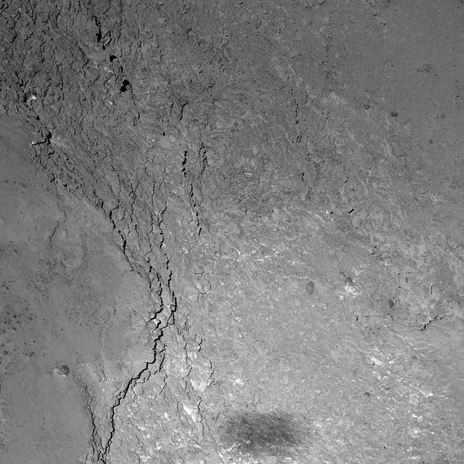It might be a first for Europe's Rosetta space probe that took a selfie of its own shadow as it orbited close above Comet 67P Churyumov/Gersimenko. The probe also took photos showing unprecedented detail of the comet's surface but still hasn't found its missing Philae lander.
The European Space Agency said the close flyby of the comet took place on February 14. The image released by ESA shows an area near the edge of the comet's "belly" and close to the Imhotep-Ash regional boundary.
The image with Rosetta's shadow is a close-up view of a 228 x 228 meter area on the Imhotep region as seen by the OSIRIS Narrow Angle Camera during Rosetta's flyby. The image was taken six kilometers above the comet's surface, and the image resolution is just 11 cm/pixel.
OSIRIS or the Optical, Spectroscopic, and Infrared Remote Imaging System is the main scientific imaging system on Rosetta.
During the flyby, Rosetta not only passed closer by the comet than ever before. It also passed through a unique observational geometry: the Sun, spacecraft, and comet were exactly aligned for a short time. In this geometry, surface features on the comet cast almost no shadows, allowing researchers to discern the reflection properties of the surface material, according to the Rosetta blog.
"Images taken from this viewpoint are of high scientific value," says OSIRIS Principal Investigator Holger Sierks from the Max Planck Institute for Solar System Research in Germany. "This kind of view is key for the study of grain sizes."
As a side effect of this exceptional observational geometry, Rosetta's shadow can be seen cast on the surface of Comet 67P as a fuzzy rectangular-shaped dark spot surrounded by a bright halo-like region.
Rosetta isn't the first spacecraft to capture its own shadow this way. In 2005, JAXA's Hayabusa spacecraft captured its shadow on asteroid Itokawa.





















